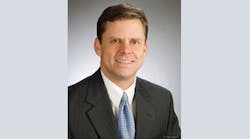Most employers would probably add rising health care costs to death and taxes as the few certainties of life. Indeed, heath care costs per employee are expected to rise 5.9% this year after an average 5.4% increase in 2011, according to a Towers Watson/National Business Group on Health survey released in March.
Knowing this, corporate leaders continue to seek cost-cutting solutions for health care benefits. Whether they're offering more wellness programs or consumer-driven insurance plan options, companies recognize traditional approaches to health care benefits are too costly to maintain.
Diversified power-management company Eaton Corp. (IW 500/72) developed a global strategy in 2009 aimed at controlling rising health care costs. The following year, the company implemented a wellness program that focused on changing employee lifestyles, says Gordon Harman, Eaton's vice president of benefits.The company's ultimate goal with the program is to cut its annual increase in health care costs for current employees by 50% in five years, Harman says. Eaton has already developed smoking cessation programs and is working with the Cleveland Clinic to create a healthier menu at its cafeterias.
Companies that encourage employees to adopt healthier lifestyles have experienced a much lower average heath care cost increase of 2.2% over the past four years, according to the Towers/Watson survey. "We've seen employers begin to embrace the idea of wellness programs in a meaningful way," says Ralph Bernstein, senior vice president of U.S. Bank's Emerging Strategies & Innovation group. "It says the key to lowering the cost of health care is keeping people from getting sick; not helping people recover when they do get sick."
Consumer-Driven Plans Take Hold
But wellness programs alone may not be enough to stabilize health care costs. More companies are adding consumer-driven insurance options, such as Health Savings Accounts (HSAs), to their benefits plans to save money.
Steel-processing company Worthington Industries Inc. (IW 500/331) implemented a health reimbursement account (HRA). Similar to HSAs, Worthington's HRA program provides employees with a fund for health care-related expenses with no deductibles up front. Once the fund is exhausted, a deductible is applied, says company spokesperson Sonya Higginbotham. After employees meet their deductible, the plan covers 80% of their medical costs.
"Even though the fund money is provided by the company, employees are more aware of the cost of health care-related expenses and are more likely to shop around for scheduled services and consider, for example, calling a family doctor before going to the ER for non-urgent care," Higginbotham says.
Unlike HSAs, HRA funds don't have to be coupled with high-deductible plans and don't include out-of-pocket maximum limits set by the government, according to the Society for Human Resource Management. HRAs are also funded solely by the employer.
Eaton replaced two of its three PPO options with consumer plans coupled with HSAs this year, Harman says. Eaton's HSA includes an employer contribution. In the plan's first year, the company attained a 22% enrollment rate in its consumer options without reducing the value compared with the existing PPO, Harman says. Worthington's HRA participation rate rose to 60% in 2012 from 48% last year, Higginbotham says.
"While these plans do come with a higher deductible, the offset is typically they have meaningfully lower premiums than standard health-insurance plans, where an employee has a low deductible and office copay," Bernstein says.



